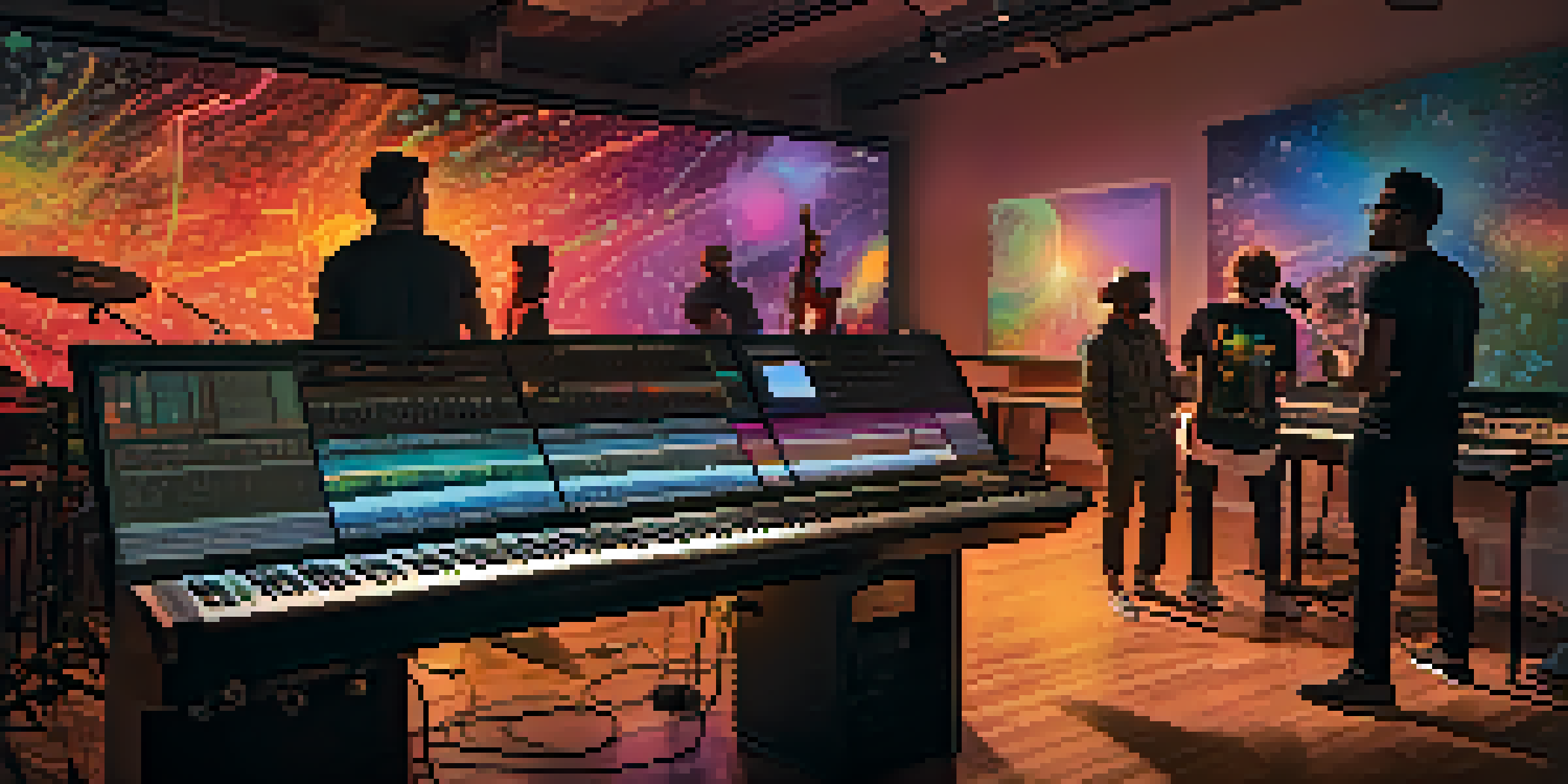Data Analytics in Music: Understanding Listener Preferences

The Rise of Data Analytics in the Music Industry
In recent years, the music industry has embraced data analytics like never before. This shift has been driven by the need to understand listener behaviors and preferences. By leveraging algorithms and data collection methods, artists and labels can make informed decisions about marketing and distribution.
Without data, you're just another person with an opinion.
For example, streaming platforms gather massive amounts of data on user interactions, such as which songs are played repeatedly or skipped. This information allows them to create personalized playlists, enhancing the user experience and keeping listeners engaged. Consequently, artists can use these insights to tailor their music to meet audience demands.
Ultimately, the integration of data analytics in music is transforming how we create, consume, and appreciate sound. It's no longer just about talent; it's about understanding the audience and using that knowledge to craft hits.
Understanding Listener Preferences Through Data
Data analytics provides a window into listener preferences, revealing trends and patterns that might otherwise go unnoticed. By examining metrics such as genre popularity, song duration, and release timing, artists can gauge what resonates with their audience. This data-driven approach can significantly reduce the guesswork involved in music production.

For instance, if analytics show that listeners prefer shorter songs with catchy choruses, artists can adapt their songwriting accordingly. Likewise, data can reveal peak listening times, helping artists schedule releases for maximum impact. By aligning their work with listener preferences, artists increase the chances of commercial success.
Data Analytics Transforms Music Creation
Artists can leverage data analytics to understand listener preferences and tailor their music, optimizing for commercial success.
In this way, data analytics acts as a compass, guiding artists toward the musical choices that will captivate their audience. This connection between analytics and creativity is reshaping the industry landscape.
How Streaming Platforms Utilize Data Analytics
Streaming platforms are at the forefront of utilizing data analytics to enhance user experience and drive engagement. They collect and analyze vast amounts of data from user interactions, which helps them curate personalized recommendations for each listener. This not only keeps users engaged but also promotes new artists and songs based on individual tastes.
Data beats emotions.
Take Spotify, for example. Their algorithm considers factors like listening history, song features, and even the time of day to create tailored playlists such as 'Discover Weekly.' This personalized approach not only delights listeners but also offers artists a chance to reach potential fans who might not have discovered them otherwise.
As a result, streaming platforms are not just music libraries; they are dynamic ecosystems that evolve based on listener preferences. This constant feedback loop helps artists refine their sound and expand their audience.
The Role of Social Media in Music Data Analytics
Social media plays a pivotal role in music data analytics, providing a treasure trove of information about listener sentiments and trends. Platforms like Twitter, Instagram, and TikTok allow fans to express their opinions on songs, artists, and music videos in real-time. This user-generated content is invaluable for artists and labels, offering insights into audience engagement and brand perception.
For example, a viral TikTok challenge can instantly catapult a song to the top of the charts, demonstrating the power of social media influence. By analyzing engagement metrics, artists can identify which songs resonate with listeners and leverage that information for promotional strategies.
Streaming Platforms Personalize Experience
Platforms like Spotify use data to create personalized playlists, enhancing user engagement and helping artists reach new audiences.
In this interconnected age, social media acts as both a feedback mechanism and a promotional tool. Understanding how to navigate this landscape is crucial for artists aiming to connect with their audience authentically.
Predictive Analytics: Anticipating Listener Trends
Predictive analytics is a game-changer in the music industry, allowing artists and labels to forecast listener trends before they fully emerge. By analyzing historical data, predictive models can identify patterns that signal upcoming shifts in listener preferences. This foresight enables artists to stay ahead of the curve and adjust their strategies accordingly.
For instance, if data shows a rising interest in a particular genre or style, artists can experiment with those elements in their upcoming releases. This proactive approach not only maximizes the chances of success but also fosters innovation within the music scene.
In essence, predictive analytics empowers artists to be trendsetters rather than followers. By harnessing the power of data, they can create music that's not just relevant but also ahead of the times.
Challenges in Data Analytics for Music
While data analytics offers numerous benefits, it also presents challenges that the music industry must navigate. One significant issue is the potential for data overload, where the sheer volume of information can be overwhelming. Artists and labels need to discern which metrics are most relevant to their goals, or risk getting lost in the noise.
Additionally, there are concerns about privacy and data security. As listeners become more aware of how their data is used, maintaining transparency and trust becomes paramount for music platforms. Striking a balance between leveraging data for insights and respecting listener privacy is essential.
Predictive Analytics Shapes Trends
By utilizing predictive analytics, artists can anticipate listener trends and innovate their music to stay ahead of the curve.
These challenges highlight the need for a thoughtful approach to data analytics in music. By addressing these issues head-on, the industry can continue to thrive in this data-driven era.
The Future of Data Analytics in Music
The future of data analytics in the music industry holds exciting possibilities that could redefine the way we experience music. Emerging technologies like artificial intelligence and machine learning are set to enhance data analysis capabilities, providing even deeper insights into listener behavior. This evolution will enable artists to create more tailored and engaging music experiences.
Moreover, as the industry continues to embrace data-driven decision-making, we can expect to see more collaboration between artists and data analysts. This partnership could lead to innovative projects that blend creativity with analytical precision, pushing the boundaries of musical expression.

Ultimately, the fusion of data analytics and music will create a more dynamic and responsive industry, where artists can connect with their audiences like never before. The journey ahead is thrilling and full of potential.